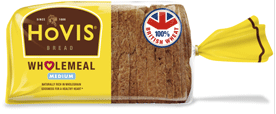Analysts highlight future risks for Premier Foods

Graham Jones of Panmure Gordon told FoodManufacture.co.uk that it was “so far, so good” for Premier, but that it “was difficult to tell with so many moving parts”.
The Sharwood’s to Ambrosia company had reported a “reasonable” performance in the first half, although debt was slightly up at £1.27bn (from £1.26bn). It had made some market share gains and was ahead on its cost-saving programme and on track to report its targeted £40M savings early – at the end of 2012 rather than the end of 2013, Jones said.
Jones added: “The biggest news ... is that the £40M cost saving target for 2013 will now be delivered by the end of 2012, and while Premier gives no new number for the overall ultimate cost savings, it is clearly higher than £40M. This will help offset dilution from the disposal programme, which is described as ‘on schedule’, and we don’t expect to materially change forecasts today.”
Meanwhile, Martin Deboo of Investec said in a note that first-half performance represented a “solid start to the new future, with modest organic growth in sales and profit being delivered”.
Grown share
Premier had shared data from market analysts IRI, which suggested it had grown share in its ‘power brand’ categories in 17 out of the most recent 18 weeks. These eight ‘power brands’, which Premier Foods is focusing on for the future, are Ambrosia, Batchelors, Bisto, Hovis, Loyd Grossman, Mr. Kipling, Oxo and Sharwood’s.
But there was “plenty to worry about and plenty to play for, as ever”, Deboo said. With wheat prices likely to go up, Premier would need a price increase in its second half as wheat represented around £150M of its annual costs. With that “comes risk”.
Premier has restated the way it presents its numbers this half. On this basis underlying trading profit rose by 3.2% from £51.5M to £53.2M.
Sales, excluding milling, rose by 1.1% to £757.1M, with ‘power brands’, growing by 2.0% and branded Grocery sales rising by 1.7%.
On a divisional basis, Grocery profits fell by 4.4% to £95.5M, Bread profits fell by 27% to £22.5M and group costs fell by 18% to £64.8M.
TV advertising
Consumer marketing rose by 40.9% to £24.8M, principally due to increased TV advertising on seven of the eight ‘power brands’.
Analysts at Citi, meanwhile, said Premier Foods’ stock remained high risk due to the high level of debt and risks to the share price, including cost inflation and competitive pressures in the UK food space.
Premier Foods employs around 10,000 people operating from over 40 sites from Plymouth to Glasgow.















